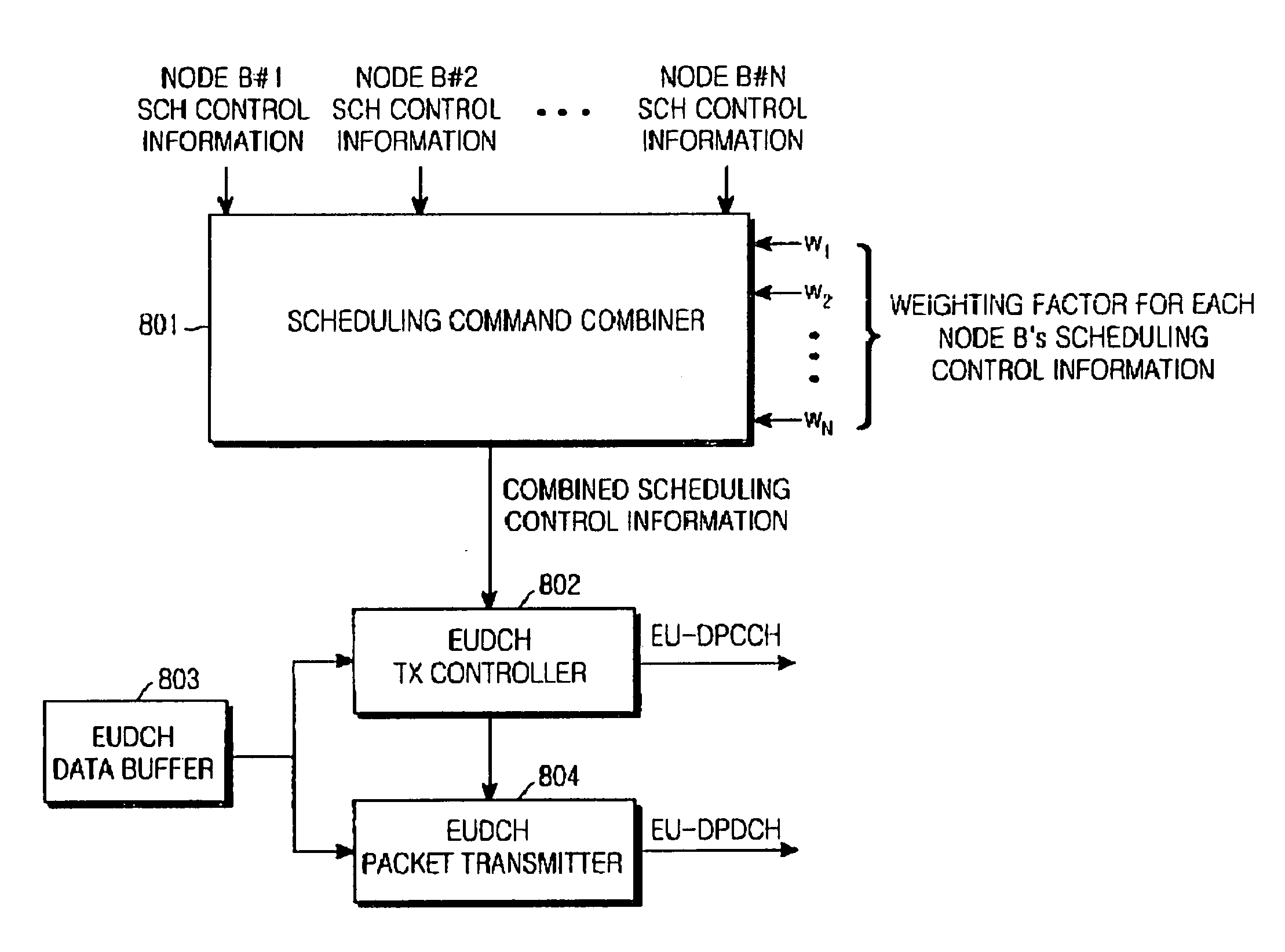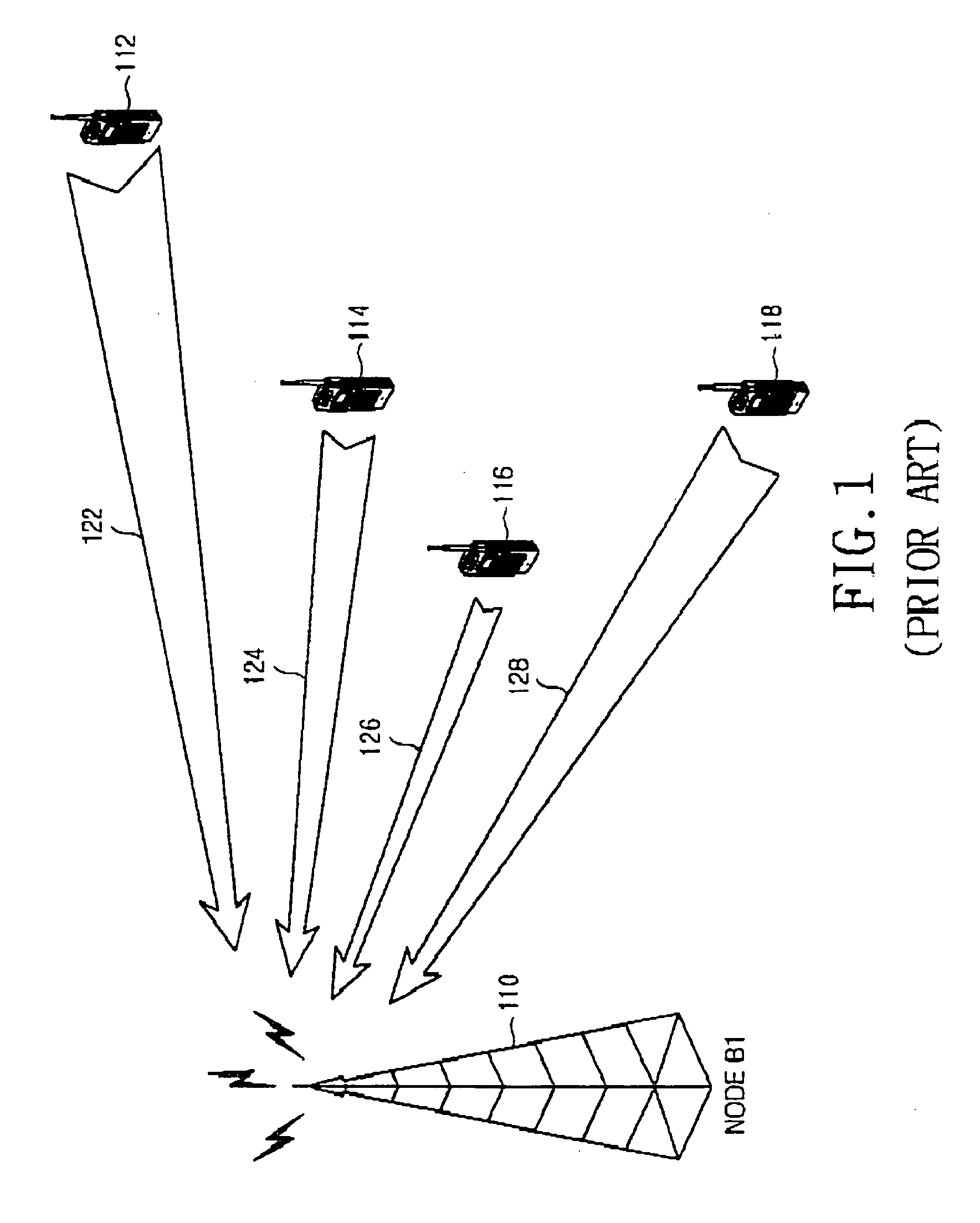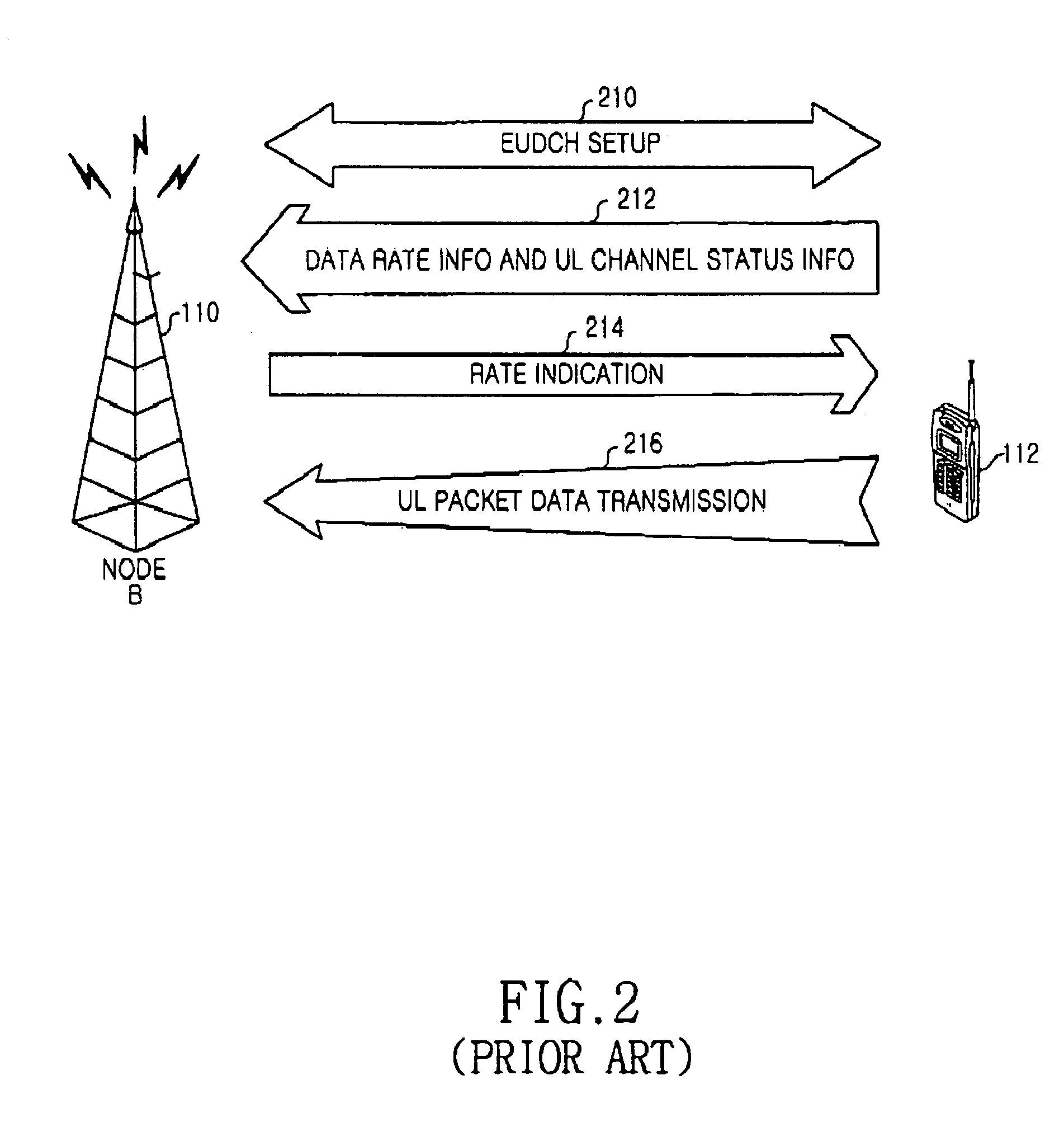Scheduling apparatus and method in a CDMA mobile communication system
a mobile communication system and scheduling apparatus technology, applied in the direction of electrical apparatus, broadcast service distribution, connection management, etc., can solve the problems of deteriorating reception performance, limited number of uplink channel signals that a node b can receive while ensuring reception performance, etc., to achieve efficient performance of an enhanced uplink dedicated transport channel (eudch) servi
- Summary
- Abstract
- Description
- Claims
- Application Information
AI Technical Summary
Benefits of technology
Problems solved by technology
Method used
Image
Examples
first embodiment
FIG. 9 is a block diagram illustrating an example of the scheduling command combiner illustrated in FIG. 8, and FIG. 10 is a flowchart illustrating a control procedure by the scheduling command combiner illustrated in FIG. 9. That is, FIGS. 9 and 10 illustrate a UE apparatus and method for an embodiment applicable when a Node B transmits EUDCH packet transmission allowability and an allowable maximum data rate to a UE as scheduling control information. The EUDCH packet transmission allowability can be substituted for information indicating whether there is a scheduling grant message transmitted to a corresponding UE. That is, if there is a scheduling grant message transmitted to a corresponding UE, the UE determines that EUDCH packet transmission is allowed. Otherwise, the UE determines that EUDCH packet transmission is not allowed.
In FIG. 9, a parameter grantn is a scheduling grant value indicating whether there is a scheduling grant message transmitted to a corresponding UE by a...
second embodiment
FIG. 11 is a block diagram illustrating another example of the scheduling command combiner illustrated in FIG. 8, and FIG. 12 is a flowchart illustrating a control procedure by the scheduling command combiner illustrated in FIG. 11. That is, FIGS. 11 and 12 illustrate a UE apparatus and method for another embodiment applicable when an active Node B transmits EUDCH packet transmission allowability and an allowable maximum data rate to a UE as a scheduling control command. The EUDCH packet transmission allowability can be substituted for information indicating whether there is a scheduling grant message transmitted to a corresponding UE. That is, if there is a scheduling grant message transmitted to a corresponding UE, the UE determines that EUDCH packet transmission is allowed. Otherwise, the UE determines that EUDCH packet transmission is not allowed.
In FIG. 11, a parameter grantm is a scheduling grant value indicating whether there is a scheduling grant message transmitted to a c...
third embodiment
FIG. 13 is a block diagram illustrating yet another example of the scheduling command combiner illustrated in FIG. 8, and FIG. 14 is a flowchart illustrating a control procedure by the scheduling command combiner illustrated in FIG. 13. That is, FIGS. 13 and 14 illustrate an embodiment that can be applied to a system in which a rate grant command indicating up (increase), keep (hold) or down (decrease) of a maximum allowed data rate is transmitted from active Node Bs to a UE as a scheduling command. The UE then increases, maintains, or decreases a maximum allowed data rate according to the rate grant command and transmits EUDCH packet at a data rate below the maximum allowed data rate considering a EUDCH data buffer status and an allowed delay time.
In FIG. 13, a parameter RGn is a rate grant command transmitted by a Node B#n. For example, RGn=1 represents up of a maximum allowed data rate, RGn=0 represents keep of a maximum allowed data rate, and RGn=−1 represents down of a maximu...
PUM
 Login to View More
Login to View More Abstract
Description
Claims
Application Information
 Login to View More
Login to View More - R&D
- Intellectual Property
- Life Sciences
- Materials
- Tech Scout
- Unparalleled Data Quality
- Higher Quality Content
- 60% Fewer Hallucinations
Browse by: Latest US Patents, China's latest patents, Technical Efficacy Thesaurus, Application Domain, Technology Topic, Popular Technical Reports.
© 2025 PatSnap. All rights reserved.Legal|Privacy policy|Modern Slavery Act Transparency Statement|Sitemap|About US| Contact US: help@patsnap.com



